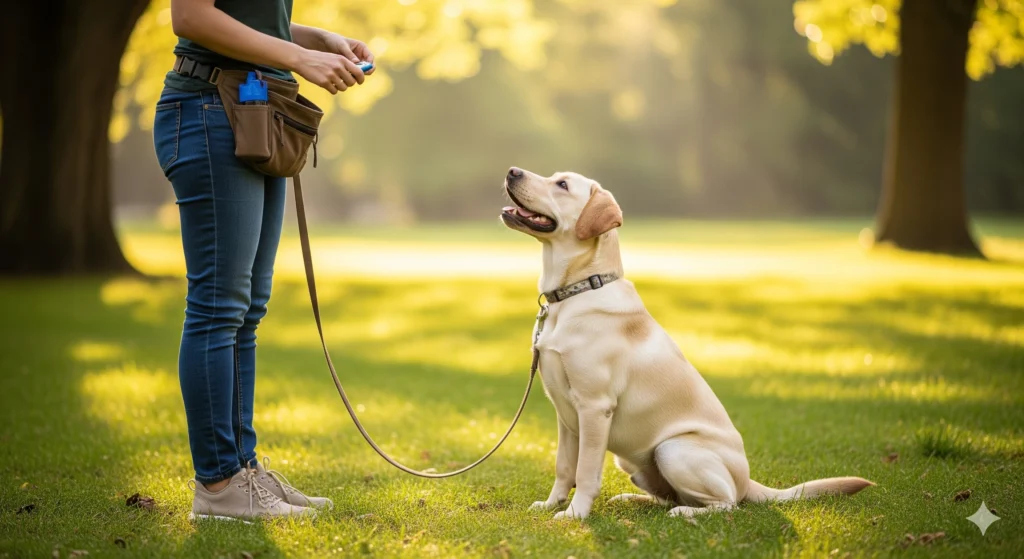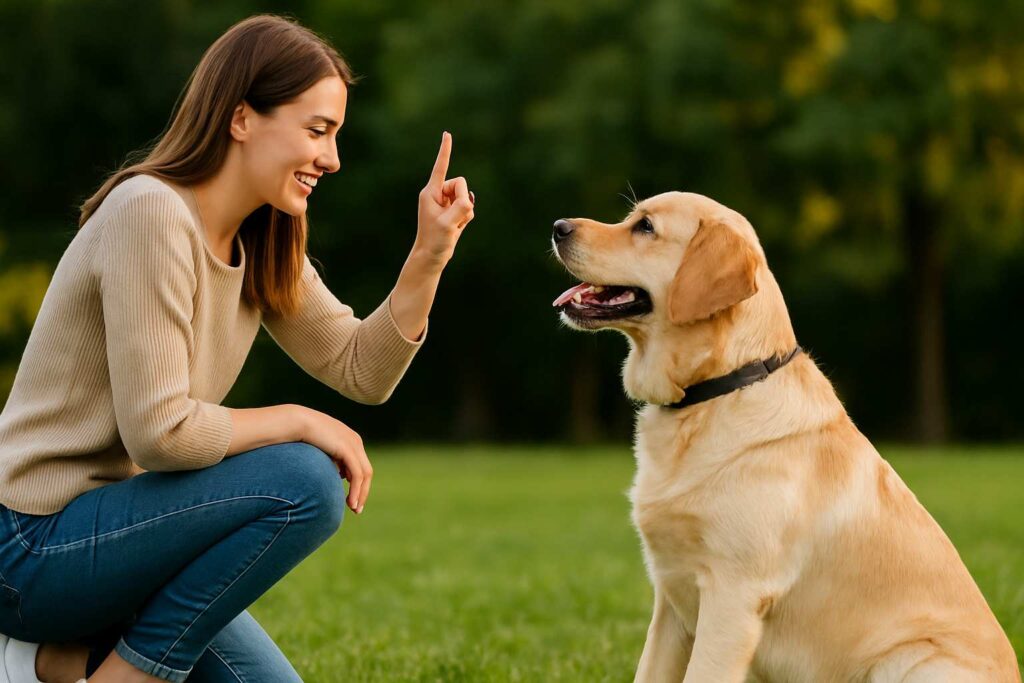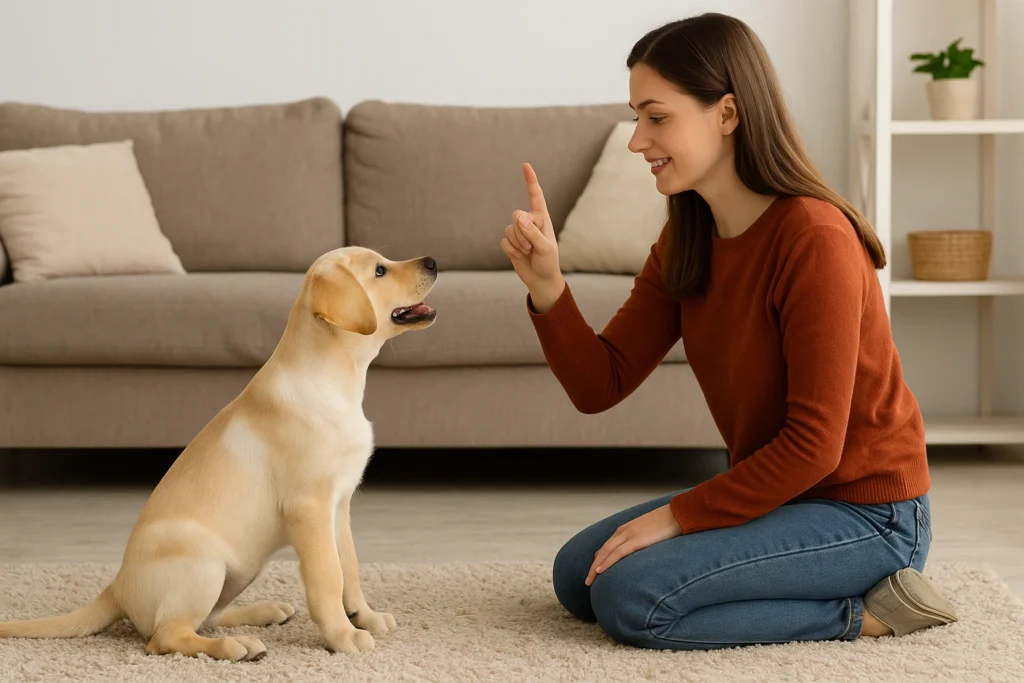My First Weeks of Dog Training
When I first brought my dog home, I’ll be honest—I felt completely unprepared. I thought all I needed was a leash, a bag of treats, and a little patience. But within the first week, I realized how wrong I was. My new pup was pulling on walks, ignoring me when I called, and chewing on anything that wasn’t nailed down.
That’s when I started asking the same question you might be asking now: Which dog training tools actually help beginners train effectively?
After a lot of trial and error (and quite a few chewed-up shoes), I discovered that the right tools make all the difference. They don’t replace patience, consistency, or positive reinforcement—but they do make training easier, clearer, and far more effective. In this post, I’ll share the tools that worked for me, what didn’t, and what every new dog owner should know before getting started.
Why Dog Training Tools Matter
Dog training is not about gadgets or quick fixes—it’s about communication. The tools you choose are simply ways to help you and your dog understand each other better. For me, the difference between a stressful walk and an enjoyable one came down to using a proper harness. The difference between chaotic training sessions and calm, focused learning was as simple as a clicker.
Each tool I’ll cover here has its pros and cons, and I’ll explain them honestly, with personal experiences along the way. Because let’s face it—not every tool works for every dog, and sometimes, we don’t even realize what we need until we’re knee-deep in frustration.
The Essential Dog Training Tools Every Beginner Should Know
Here’s the breakdown of the most useful tools I’ve personally tried or seen other dog owners rely on:
- Clicker
- Treat Pouch
- Long Training Leash
- Front-Clip Harness
- Crate
- Interactive Toys
- Training Mats or Place Boards
- Chew Toys for Redirection
- Target Stick
- Whistle or Recall Tool
Let’s dive into each one—pros, cons, and practical tips from someone who’s been in your shoes.
Clicker Training: Small Tool, Big Results
Pros of Using a Clicker
When I first heard about clicker training, I was skeptical. Could a tiny plastic tool really change the way my dog learned? The answer turned out to be yes. The clicker creates a clear, consistent sound that marks the exact moment your dog does something right.
The best part is how quickly dogs catch on. Within a few sessions, my pup knew that a click meant “Yes! That’s exactly what I wanted you to do.” It made communication faster and cut down on confusion.
Another pro: it works for everything—basic commands like sit and stay, leash manners, or even fun tricks.
Cons of Using a Clicker
The biggest downside for me was timing. At first, I clicked too early or too late, and my dog looked confused. There’s a learning curve, not just for the dog, but for the owner. Another con is simply remembering to have it on hand—I can’t count the number of times I left it on the counter.
Still, once you get the hang of it, it becomes second nature.
Treat Pouch: Keeping Rewards Handy
Pros of a Treat Pouch
At first, I stuffed treats in my jacket pocket, and it was a disaster—crumbs, grease, and a smell that lingered for days. That’s when I invested in a proper treat pouch.
The biggest pro is convenience. Training relies on timing, and the pouch makes it easy to reward good behavior instantly. Some even clip to your belt or have magnetic closures, which saves a ton of fumbling.
For me, having the pouch ready during walks kept my dog’s attention on me instead of distractions.
Cons of a Treat Pouch
Honestly, the only downside is that it’s one more thing to carry. Some pouches can be bulky or awkward. And yes, you’ll still smell like treats if you forget to clean it out. But compared to the mess in my coat pockets, it’s worth it.
Long Training Leash: Freedom With Control
Pros of a Long Leash
If you’ve ever wanted your dog to practice recall (coming when called) but felt nervous about letting them off-leash, a long training leash is a game-changer. I use a 30-foot leash, and it gave my dog freedom to explore while still keeping him safe.
It’s perfect for practicing commands like “come” or “stay” in real-world settings. It also builds confidence for both dog and owner.
Cons of a Long Leash
The downside is tangling. If you’re in a wooded area or a park with lots of people, it can quickly become a mess. It’s also not ideal for small spaces or crowded sidewalks.
But with open fields or backyards, it’s one of the best tools for training recall.
Front-Clip Harness: Ending the Battle of the Leash
Pros of a Front-Clip Harness
When I first tried walking my dog on a standard collar, he pulled like a sled dog. Switching to a front-clip harness was life-changing.
The harness shifts the point of control to the chest, which naturally discourages pulling. Walks became calmer, safer, and more enjoyable. I also liked knowing it was gentler than a choke chain or prong collar, which I’ve always avoided.
Cons of a Front-Clip Harness
Not every harness fits perfectly out of the box. I had to try two different brands before finding one that didn’t rub under the arms. Also, some dogs still pull, just less than before—it’s not a magic solution.
But compared to the frustration of collar-only walks, I’d recommend it to any beginner.
Crate Training: A Tool for Structure
Pros of a Crate
I’ll admit—I was hesitant about crate training at first. I thought it seemed restrictive. But I quickly learned that a crate is not a punishment; it’s a safe space.
For my dog, it helped with house training, prevented destructive chewing, and gave him a place to relax. Dogs naturally like dens, and the crate provided that comfort.
It also saved me countless headaches when I had to leave the house for a short time.
Cons of a Crate
The downside is misuse. If you leave a dog crated too long, it becomes cruel instead of helpful. It requires balance. Some dogs also resist at first, and training them to see the crate as positive takes patience.
Still, once it’s done right, it’s one of the most effective tools a new owner can use.
Interactive Toys: Training Through Play
Pros of Interactive Toys
One of the best lessons I learned is that mental stimulation is just as important as physical exercise. Interactive toys like puzzle feeders or treat-dispensing balls kept my dog engaged and reduced problem behaviors.
They also doubled as training opportunities—I used puzzle toys to reinforce commands like “wait” or “leave it.”
Cons of Interactive Toys
Not all toys are durable. Some lasted a week before my dog figured out how to rip them apart. And they can get expensive if you keep replacing them.
Still, they’re worth including in any training routine, especially for high-energy or easily bored dogs.
Training Mats or Place Boards
Pros of Training Mats
A training mat (or place board) gives your dog a clear, defined spot to settle. I used one to teach “place,” which was a lifesaver during family dinners.
It helps with impulse control and gives your dog structure in busy situations.
Cons of Training Mats
The challenge is portability. Some mats are bulky, and not every dog takes to them right away. You’ll need patience and consistency to build the habit.
But once established, it becomes one of the most practical tools in daily life.
Chew Toys for Redirection
Pros of Chew Toys
Puppies chew. That’s a fact. For me, having durable chew toys was the only way to protect my furniture and shoes. They also helped with teething pain and gave my dog something productive to do.
Cons of Chew Toys
The biggest issue is safety—some toys are not as durable as advertised, and small pieces can break off. Always supervise chewing and choose reputable brands.
Target Stick: Guiding Without Force
Pros of a Target Stick
This was a tool I discovered later, and it surprised me. A target stick helps guide your dog’s movement without pushing or pulling. For example, you can teach “heel” by having them follow the stick, or use it for agility training.
It’s especially useful for shy or hesitant dogs.
Cons of a Target Stick
It takes practice, and not every owner finds it necessary. It’s more of an “extra” than a must-have. But for me, it added a new dimension to training once we mastered the basics.
Whistle or Recall Tool
Pros of a Whistle
For recall training, a whistle creates a clear, distinct sound that cuts through distractions better than your voice. I found it especially useful in open spaces where shouting didn’t work.
Cons of a Whistle
The downside is consistency—everyone in the family has to use it the same way, or the signal gets diluted. Also, some dogs take longer to respond if they’re used to verbal cues.
Putting It All Together: My Beginner’s Toolkit
After months of trial and error, here’s the toolkit I’d recommend to any beginner:
- Clicker
- Treat pouch
- Front-clip harness
- Long training leash
- Crate
- A couple of durable interactive toys
With these basics, you can cover obedience, leash manners, house training, and enrichment—all while keeping your dog safe and happy.
Closing Thoughts
If you’re just starting out, remember this: no tool replaces patience, consistency, and kindness. But the right tools do make training easier and more enjoyable—for both you and your dog.
Looking back, I wish I had known about these tools before I brought my pup home. It would have saved me a lot of stress and chewed-up sneakers.
To make your journey easier, I’ve created a free printable checklist of beginner dog training tools you can keep on hand. It’s a simple way to stay organized and confident as you start training your new best friend.
If you’re just starting your journey, these tools will make training easier and more enjoyable. To see how they fit into a bigger training plan, don’t miss our Ultimate Beginner’s Guide to Dog Training




